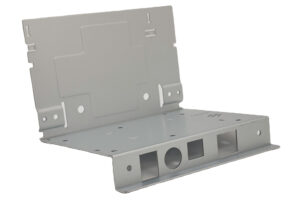Mild Steel Fabrication: A Comprehensive Guide

Introduction to Mild Steel Fabrication
Mild steel, also known as low carbon steel, is a popular and versatile material used in a wide range of industries and applications. Its properties make it ideal for fabrication processes, including welding, cutting, bending, and forming. Mild steel is cost-effective, readily available, and offers good weldability, making it a preferred choice for many fabricators. In this article, we will explore the various aspects of mild steel fabrication, including its properties, common uses, fabrication techniques, and considerations for working with mild steel.
Properties of Mild Steel
Mild steel is characterized by its relatively low carbon content, typically ranging from 0.05% to 0.25%. This low carbon content results in a material that is easy to work with and has excellent ductility and formability. Other key properties of mild steel include:
- 1. Strength: While not as strong as high carbon or alloy steels, mild steel offers sufficient strength for many applications.
- 2. Weldability: Mild steel can be easily welded using various welding techniques, making it suitable for joining different components.
- 3. Ductility: Mild steel can be easily formed and bent into various shapes without cracking or breaking.
- 4. Machinability: Mild steel is easy to machine, allowing for precise cutting and shaping of components.
- 5. Corrosion resistance: Mild steel is susceptible to corrosion, especially in harsh environments. Proper surface treatment and coating are essential to enhance its corrosion resistance.
Common Uses of Mild Steel
Mild steel finds widespread application in various industries due to its versatility and affordability. Some common uses of mild steel include:
- 1. Structural components: Mild steel beams, columns, and plates are commonly used in construction and infrastructure projects.
- 2. Automotive industry: Mild steel is used in the manufacturing of automotive chassis, body panels, and structural components.
- 3. Machinery and equipment: Mild steel parts are utilized in the production of machinery, tools, and equipment for various industries.
- 4. Furniture: Mild steel is often employed in the fabrication of furniture frames, shelves, and brackets.
- 5. Pipework and tubing: Mild steel pipes and tubes are used in plumbing, HVAC systems, and industrial applications.
- 6. Decorative items: Mild steel is also used for creating decorative items such as gates, railings, and sculptures due to its malleability.
Fabrication Techniques
Several fabrication techniques are employed to shape and assemble mild steel components. Some common techniques include:
- 1. Cutting: Mild steel can be cut using various methods, including shearing, sawing, plasma cutting, and laser cutting.
- 2. Welding: Welding is a crucial process in mild steel fabrication, with techniques such as MIG welding, TIG welding, and arc welding commonly used.
- 3. Forming: Mild steel can be formed into desired shapes through processes like bending, rolling, stamping, and pressing.
- 4. Machining: CNC machining and turning are used to precisely shape mild steel components for specific applications.
- 5. Surface treatment: Mild steel parts may undergo surface treatments such as painting, powder coating, galvanizing, or plating to improve their appearance and corrosion resistance.
Considerations for Mild Steel
When working with mild steel, fabricators need to consider several factors to ensure the quality and integrity of the final product. Some important considerations include:
- 1. Material thickness: The thickness of the mild steel sheet or plate affects the fabrication processes and requires appropriate equipment and techniques.
- 2. Design considerations: Proper design and engineering of components are essential to ensure their functionality and structural integrity.
- 3. Heat input: Excessive heat during welding can lead to distortion and weakening of the material, so controlling the heat input is crucial.
- 4. Safety precautions: Fabricators should follow safety protocols while handling and fabricating mild steel to prevent accidents and injuries.
- 5. Quality control: Regular inspection and testing of mild steel components are necessary to verify their quality and performance.
Our Fabrication Services
At Metalfabricationchina, we specialize in meeting all your mild steel fabrication requirements. Our services include:
– Precision mild steel fabrication
– CNC cutting of mild steel
– Welding of mild steel components
– Forming of mild steel structures
– Riveting of mild steel products
– Laser cutting of mild steel, and more
KDMFAB offers a diverse range of solutions in the mild steel fabrication sector, ensuring limitless possibilities for your projects. Furthermore, we employ advanced surface finishing techniques to enhance the quality of mild steel components.
Mild Steel Fabrication HSN Code
HSN Code: 72071920
Conclusion
Mild steel fabrication is a fundamental process that plays a vital role in the manufacturing industry. Understanding the properties, uses, fabrication techniques, and considerations associated with mild steel is essential for producing high-quality components and structures. By employing the right fabrication methods and adhering to best practices, fabricators can harness the versatility and benefits of mild steel in diverse applications. Whether in construction, automotive, machinery, or other sectors, mild steel continues to be a reliable and cost-effective material for fabrication projects.
In above, we have provided an overview of mild steel fabrication, highlighting its properties, common uses, fabrication techniques, and key considerations. By incorporating this knowledge into their work, fabricators can enhance their skills and deliver superior mild steel components for various applications.
